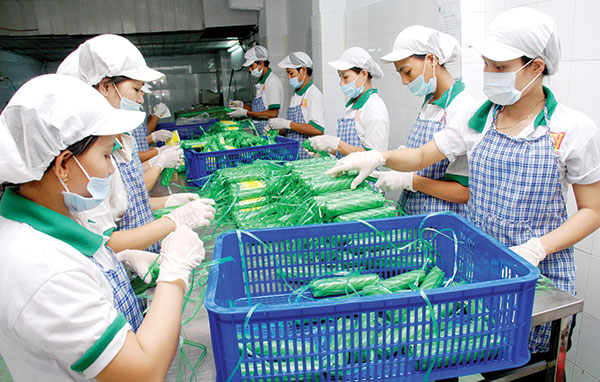FAST 500 reveals SOE shortfalls

Two thirds of the firms listed in the Fast 500 were from the private domestic sector
The Fast 500 Ranking List 2013, drawn up annually since 2011 by Vietnam Report, showed that two-thirds of the 500 fastest-growing companies in Vietnam are private domestic firms.
Fast 500 lists the 500 quickest-growing firms in Vietnam in terms of revenue growth. Other factors such as total assets, number of employees and profit after tax are also taken into consideration.
Vietnam Report said private domestic enterprises comprised more than 65 per cent of the list, double that of state-owned enterprises (SOEs). The average growth rate of the private domestic sector was 50.3 per cent, significantly higher than SOEs and foreign-invested companies with 38.9 per cent and 43.8 per cent, respectively.
“The results showed how vibrant the private sector is despite a poor business year and it bodes well for the economy in 2014,” said Vietnam Report deputy chairman Phung Hoang Co.
It was a different picture for the SOE sector which expended significant amounts of capital and resources but saw only small, if any, profits.
As of 2013, there were 846 SOEs (100 per cent owned by the state) with charter capital and assets totalling about VND2,569 trillion ($122.33 billion), of which 18 groups and corporations comprise a major hold of VND840 trillion ($40 billion).
However, many experts have expressed concern that instead of being a strong pillar for the country, many SOEs were inefficient and some were even the catalyst behind Vietnam’s economic troubles in recent years.
“SOEs are viewed by many as the reason for the massive volume of non-performing loans in the banking system and economic imbalances,” said Dinh Tuan Minh, an economist from Vietnam Centre for Economic and Policy Research.
He added that according to calculations done by the General Statistics Office, SOEs’ capital demand is nearly double that of private companies to make the same profits.
“State companies are incentivised through loans, access to land, and limited profit targets, but are inefficient. This is hampering the growth of the economy,” Eurocham stated at the Vietnam Business Forum (VBF) last year.
The Fast 500 list also showed that the food and drink sector had the highest number of businesses on the list, at 18 per cent. This was followed by construction and real estate with 16 per cent, petrol and oil with 9 per cent, finance with 8 per cent and the chemical industry with 7 per cent.
A Vietnam Report survey on the economic and business potential of corporate representatives in Vietnam in 2014 showed that trade results in 2013 improved against 2012.
Almost all the respondents said they were hopeful 2014 would end the long difficult period and begin a new era of growth. About 88 per cent of respondents predicted trade in 2014 would be better than or equal to that of 2013.
The report said the changing perspective of the businesses was partly due to forecasts by institutions such as the IMF and World Bank that the global economy is warming. They also came from a stable domestic macro-economy.
What the stars mean:
★ Poor ★ ★ Promising ★★★ Good ★★★★ Very good ★★★★★ Exceptional
Latest News
More News
- Businesses ramp up production as year-end orders surge (December 30, 2025 | 10:05)
- Vietjet chairwoman awarded Labour Hero title (December 29, 2025 | 13:06)
- How to unlock ESG value through green innovation (December 29, 2025 | 10:03)
- AI reshapes media and advertising industry (December 29, 2025 | 08:33)
- FPT and GELEX sign deal to develop blockchain tech for global markets (December 29, 2025 | 08:29)
- Vietnam’s GDP forecast to grow by 9 per cent in 2026 (December 29, 2025 | 08:29)
- Women entrepreneurs are key to Vietnam’s economic growth (December 29, 2025 | 08:00)
- Vietnam's top 500 value-creating enterprises announced (December 27, 2025 | 08:00)
- The PAN Group shaping a better future with ESG strategy (December 26, 2025 | 09:00)
- Masan Consumer officially lists on HSX, marking the next phase of value creation (December 25, 2025 | 13:20)

















 Mobile Version
Mobile Version